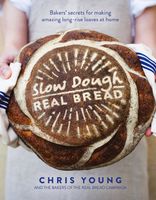Label
All
0
Clear all filters
🔥 Try our grilling cookbooks and save 25% on ckbk membership with code BBQ25 🔥
Troubleshooting
Appears in
Published 2016
Don’t Panic!
There will be times when things don’t go quite the way you’d expected but don’t worry – this happens to the world’s best bakers. Though some industrial loaf fabricators may beg to differ, baking isn’t an endlessly replicable chemistry experiment. It involves working with natural ingredients with natural variations, which you’ll be doing in a domestic kitchen that, at a guess, isn’t a computer-controlled industrial loaf production unit.
Printed recipes are always limited by having to describe in words some things that can only be explained by hands-on experience; even visual media – photos, diagrams or video – have limitations. Really, the best way to learn and improve your loaf-making skills, and how to put things right when they go wrong, is by spending time alongside a skilled baker. If you’re keen on this baking malarkey, then we recommend taking a bread-making class or course (or two: all bakers do things differently and you’ll learn something from each), where your tutor will be able to say “here, feel this dough” and your hands will let you know and understand what the phrase “kneaded enough” or “fully proved” actually means.
Become a Premium Member to access this page
Unlimited, ad-free access to hundreds of the world’s best cookbooks
Over 160,000 recipes with thousands more added every month
Recommended by leading chefs and food writers
Powerful search filters to match your tastes
Create collections and add reviews or private notes to any recipe
Swipe to browse each cookbook from cover-to-cover
Manage your subscription via the My Membership page
Best value
In this section
Advertisement
Advertisement
The licensor does not allow printing of this title


